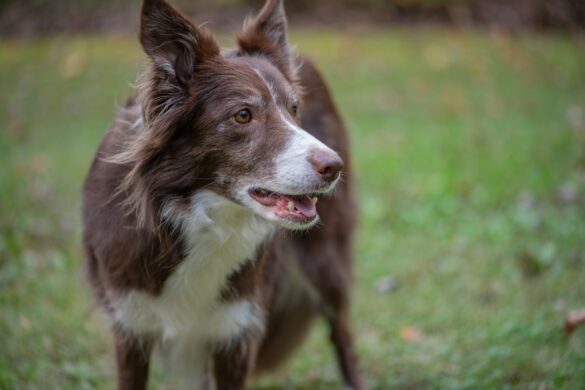History of herding dog breeds
Dogs, at their very essence, are predators. Humans rapidly learned that they needed assistance herding goats and sheep into corrals when they first started domesticating livestock thousands of years ago.
Dogs were also domesticated by humans over time, which diminished their predatory tendencies. Historically, dogs were employed to maintain order amongst livestock on farms. Dogs honed their skills at herding and protecting livestock in vast numbers.
The Australian Cattle Dog and other breeds like it got the moniker “heeler” because they would nibble at the livestock’s heels to get them moving. Other breeds, such as the Beauceron and Border Collie, guide from a distance and can often get the sheep to move with a look.
Many different types of herding dogs developed in regions where extensive, undulating grasslands and the rugged terrain made it challenging to keep track of and relocate herds. Economic growth in places like France, the United Kingdom, and Australia can be attributed to the use of herding dogs (without someone to drive the cows to market, we wouldn’t be able to make brie or harvest meat).
Monitoring and controlling herds requires a lot of mental and physical effort. Herding dogs share these traits with their working counterparts: strength, dignity, and vigilance. They take to obedience and agility training naturally. Furthermore, they have exceptional communication and coordination with their owners, allowing them to execute human commands with lightning speed and precision.
As a result, many herding dog breeds have found success in other fields, such as the military, law enforcement’s K-9 units, and as guides or service animals. According to the AKC, all dog breeds now classified as Herding Group members originated in the Working Group. The American Kennel Club gave herding dogs their category in 1983.
Common traits among herding dogs
Dogs of the herding variety are known for their high intelligence and energy levels. They have a tremendous learning capacity but require regular mental and physical stimulation. Most herding dogs bred in colder climates have long hair or even a double coat to keep them warm and dry when working in the highlands or when the weather turns bad. Unfortunately, the herding tendencies of most herding dogs are so deeply entrenched that they may extend to nudging or heel-nipping their human counterparts.
32 Types of Herding Dog Breeds
Australian cattle dog
Strong and muscular despite its small stature, the Australian Cattle dog is a highly athletic herder bred by early immigrants to herd cattle on Australia’s vast ranches.
They are robust animals that can gallop for hours in blazing conditions. Additionally, they are trustworthy, wise, and loving pets that make excellent family dogs and thrive when they are close to their human companions.

Image Credit- Getty Images
Australian Shepherd
The Australian shepherd, despite its name, was produced in the United States, although its ancestors originated in Australia. AKC recognizes it as a herding dog.
Australian Shepherd (Aussies) excels as a ranch dog and herder. They have a high IQ and impressive athleticism. They are incredibly athletic and smart, making them great at various dog sports like jogging, disc, and trick training.
If an Australian Shepherd notices a strange person approaching, they will probably alert you. Make early socialization a priority because they can also be a little reserved among strangers.
With Australian shepherds and Australian shepherd hybrids, exercise unquestionably comes first: A leisurely stroll around the block won’t satisfy their need for intensity and movement.

Image Credit- Getty Images
Bearded Collie
This long-haired, shaggy friend was developed in Scotland to serve multiple purposes in the herd. These zany canines are great companions for people of all ages.
Bearded collies, sometimes known as “beardies,” are adorable canine clowns who seem to be permanently hyperactive. These playful canines will keep you delighted for hours, but you’ll need to start them on a strict training regimen early to curb their mischief.
The amazing coats of these smart canines necessitate regular grooming, so you’ll need to replace your furnishings frequently.
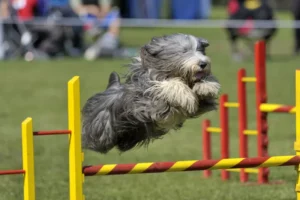
Image Credit- Getty Images
Beauceron
The Beauceron’s alert and submissive demeanor gives him a sense of superiority. These fearless French guard dogs have been bred for centuries.
Strong leadership and persistent training are essential for the success of these dogs. Fortunately, the Beauceron is a quick learner and does his best to care for and safeguard his loved ones and possessions.
Puppies of all breeds of herding dogs, including the Beauceron, require vigorous exercise. It’s important to keep your dog active and entertained at all times.

Image Credit- Getty Images
Belgian Laekenois
A medium-sized herding dog breed native to Belgium, the Belgian Laekenois is distinguished by its athletic build, pointed ears, and a double coat of wiry, curly fur. The Laekenois is easily identifiable by its distinctive coat. Although the name may appear difficult to pronounce, it is pronounced: “Lak-in-wah.”
These dogs have the temperament and work ethic to be excellent guardians and loving friends. It’s also important to note that this is not a dog for a first-time owner. They need a lot of effort to keep their “working dog” side happy, and that labor can be either mental or physical.

Image Credit- Getty Images
Belgian Malinois
There are four related Belgian herding breeds, including the Belgian Malinois. For good reason, a lot of Belgian Malinois are employed by law enforcement. These dogs can endure long hours and demanding work. They require a proprietor who will properly train them because they are smart and will push themselves to the maximum.

Image Credit- Getty Images
Belgian sheepdog
Belgian sheepdogs are well-known for their skill as herders, as well as their adaptability and stunning coats. These dogs are full of life and eager to please.
These dogs are eager to please their owners by learning new tricks and need to be active regularly or in a job to satisfy them.
You’ll need to schedule frequent grooming times if you bring one of these adorable pets into your home. This beautiful mane won’t groom itself.

Image Credit- Getty Images
Belgian Tervuren
These furry little people work and play hard and love being with their human companions. To prevent destructive behaviors caused by boredom, you should give your floofs lots of opportunities for exercise.
This gorgeous, medium-sized breed can do it all, from protecting cattle to assisting its human owners. These canines learn quickly from owners dedicated to teaching them various skills.
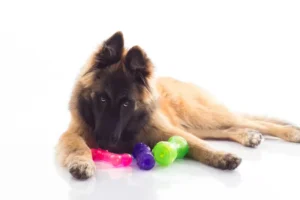
Image Credit- Getty Images
Bergamasco Sheepdog
The Bergamasco Shepherd, an Italian breed best known for its distinctive, curly, and often dreadlocked coat, is a big, strong, powerful dog with the heart of a lapdog. The pleasant and gregarious nature of these intelligent, sensitive creatures allows them to make fast friends with anyone, and they are quite loyal to their owners. In spite of their athleticism and boundless energy, these dogs require significantly less daily activity than most herding dog breeds.

Image Credit- Getty Images
Berger Picard
Picards, or Picardy shepherds, are gentle giants who thrive in the company of their loved ones. This breed is notable for its unusual ears and trainable, energetic temperament.
These nervous canines require a lot of human interaction and vigorous exercise to maintain happiness. Berger Picards have a pleasant demeanor and get along well with children.
These trustworthy canines make excellent guard dogs because of their keen sense of observation. Nonetheless, this breed is notoriously suspicious of strangers, so early socialization is essential.

Image Credit- Getty Images
Bouvier des Flandres
These herding dog breeds are devoted to their families and are known for their strength and beauty. They are extremely intelligent and workaholics, making them easy to train.
Although the bouvier des Flandres is a loving and devoted family pet, he might be reserved when meeting new people or other canines.
These dogs have a high level of determination and a hunger for new experiences, so you may take them on any kind of physical activity, provided they are by your side. These dogs are not only great friends but also excellent guard dogs.

Image Credit- Getty Images
Briard
Beautiful working dogs from France, Briards have a long, glossy coats and a sweet disposition that will win your heart over.
These sturdy strays have a fierce work ethic and make excellent guard dogs.
Dogs of this caliber have strong bonds with their families and are good with children they’ve grown up with. They may be overprotective of their family and warn you of any visitors, whether human or squirrel.
The briard’s great intelligence makes it an easy breed to train. These beardy besties will win your heart over with their unwavering devotion and infectious enthusiasm.

Image Credit- Getty Images
Canaan Dog
Canaan dogs are genetically very close to their wolf and wolfdog relatives; thus, they require an equally determined master. As a family member, the Canaan dog is always there for you if you train him to be.
If you want your dog to be less protective, you should socialize it with lots of humans and other animals from a young age.
Fortunately, these canines are highly attentive and alert, making them simple to train. This rare breed was bred for centuries to be a trustworthy friend.

Image Credit- Getty Images
Cardigan Welsh Corgi
Cardigan Welsh Corgis have been around for a very long time, possibly even thousands of years. Although they appear to be lapdogs due to their refined appearance, they are, in fact, very skilled herding dogs that have been bred for this purpose for decades.
The breed is notable for its propensity for vocalization; dogs of this type will bark at anything that moves. Even though they’re small, they nevertheless require a substantial amount of exercise regularly to avoid becoming overweight and misbehaving.
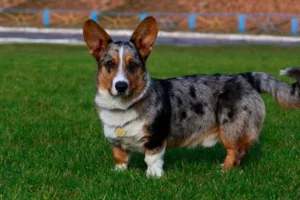
Image Credit- Getty Images
Carpathian Shepherd Dog
The Romanians are the ones who first started breeding these herding dog breeds. For years, Romanian shepherds have relied on Carpathian shepherds as trusted companions and protectors of their flocks.
The Carpathian Sheepdog’s instinct and unwavering loyalty to its flocks and master make it a standout as a watchdog breed.
If you’re an apartment resident, you shouldn’t get a Carpatin. It can tolerate harsh weather thanks to its waterproof and windproof coat. His nature is more suited to an active lifestyle.
Daily long walks are recommended for this breed because of their demand for physical activity. It’s also important to provide a spacious yard or another area for it to run around in.

Image Credit: Simona Pacurar
Finnish Lapphund
These canines, known as “Lappies,” are amiable, watchful puppies. Originally used to herd reindeer, Finnish Lapphunds today serve as dedicated family members’ companions.
These Nordic dogs are most suitable for colder locations because of their naturally thick coats. The Finnish Lapphund thrives in social situations and doesn’t want to be left alone; thus, they’ll also fit in well with families.
It’s important to prioritize socialization with other people and dogs, while a Finnish Lapphund is a puppy because they can be afraid of strangers. Lappies are sure to win your heart with their charming, submissive demeanor, even if you’ll have to cope with a lot of shedding.

Image Credit- Getty Images
German Shepherd
Possibly the first breed that automatically comes to mind when you hear the word “shepherd dog” is the German shepherd.
The German breed was bred to work on farms and herd cattle, but it is also highly regarded in law enforcement. The German shepherd is an exceptionally smart, devoted, and trainable herding breed.
German shepherds are active dogs who value everyday opportunities to play and run around. Because of their inherent intelligence, these dogs are eager to please and simple to train.
Nevertheless, these German shepherds and shepherd hybrids occasionally exhibit a suspicious or distant demeanor toward strangers.
However, these brave dogs are sure to make the ideal companion with the right socialization.

Image Credit- Getty Images
Icelandic Sheepdog
These charming dog breeds have thick, lovely coats in various colors that keep them warm in chilly times. The very amiable Icelandic sheepdogs are up for a game of fetch or frisbee.
Due to their devout nature, Icelandic sheepdogs make wonderful family pets. These adorable, self-assured puppies are eager to learn any skill you can think of. Despite their enormous personalities, these pretty medium-sized dogs barely weigh around 30 pounds.
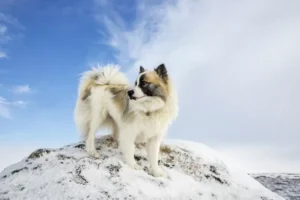
Image Credit- Getty Images
Miniature American Shepherd
These friendly dogs are a smaller breed of shepherd dog that closely resembles Australian shepherds. These canines, who weigh about 20 to 40 pounds, are remarkably energetic for their relatively small size.
Miniature American shepherds are a boisterous, energetic breed that will need frequent play and exercise to keep happy. Intelligent dogs are simple to train, but if you have young children at home, you must appropriately address their strong herding tendency.
These efficient workers have a strong desire to please and deep loyalty to their families. These small friends will win your heart for sure.

Image Credit- Getty Images
Mudi
The Mudi (pronounced “moody”) is a highly trainable herding dog that excels at practically any duty. This includes hunting, hunting-related activities, agility and obedience, search and rescue operations, and more.
This breed, also called the Hungarian Mudi, is Hungarian in origin. They were known as “driving dogs” and assisted shepherds in caring for their flocks. They are still used in Hungary today for their prowess at herding and their ability to assist shepherds with flocks.
Mudis require a lot of exercises, but with the right mental and physical stimulation, they may also make peaceful family members. Don’t discipline them harshly or with punishment; instead, train them with positive reinforcement. If you properly train them, you’ll have a loving, intelligent dog that will guard and adore you for the rest of its life.

Image Credit- Getty Images
Norwegian Buhund
These intelligent, quick-learner canines will keep you on your toes with their athletic personality. These poppers will thrive in colder climates because of their thick coats, which are designed for snow.
If you already own a Norwegian behind, you know their eagerness to please. The energetic breed enjoys spending time with his family and will provide lots of hugs after a lengthy play session.
The energetic breed is very trainable and thrives in homes where there are always other pets to play with. These affectionate puppies are very playful and look forward to the next experience.

Image Credit- Getty Images
Old English Sheepdog
The Old English Sheepdog is a huge, strong dog with a magnificent shaggy coat that is unique and has a kind disposition. These dogs were originally bred for driving and herding cattle, and they are still employed for these tasks today, but they are more frequently kept as amusing and playful household pets.
These dogs require a lot of attention and grooming, as you might assume, but they are quite versatile and can live peacefully in apartments as long as they get enough exercise.

Image Credit- Getty Images
Pembroke Welsh Corgi
The Pembroke Welsh Corgi was bred as a herding breed but is much more frequently kept as a devoted family companion. It is a small dog with a big personality. They are frequently linked to occupants of Buckingham Palace and the British royal family.
Welsh corgis were “heelers,” or cattle herding dogs, which would nibble at the larger animals’ heels to keep them moving. They can dodge cattle hooves thanks to their low height off the ground and natural quickness.

Image Credit- Getty Images
Polish Lowland Sheepdog
As a guardian and livestock herder, the Polish lowland sheepdog is well-liked in that country. This breed requires a devoted owner because it is headstrong, animated, and confident. It needs to be brushed daily due to its thick, double coat of shag.
Additionally, these dog breeds need intensive training because of how difficult it can be to train these types of breeds. The foundation stock for bearded collies was probably this breed with Scottish herding dogs.

Image Credit- Getty Images
Puli
The Puli has been employed in Hungary for centuries to watch over farms and herd sheep. The modern Puli still has the impulse to guard and watch and the instinct to gather and drive a flock of sheep.
Without sheep, the Puli will herd household pets, young children, poultry, and anything else that moves.
While out with the flock, its thick corded coat, which resembles a mop, shields it from the environment and predators.

Image Credit- Getty Images
Pumi
These small, courageous dogs are excellent sheepherders. The pumi has a free-willed disposition and is agile, smart, and self-assured.
Pumis must be housed by someone who leads an active lifestyle because they thrive on nonstop labor and play. They are rather tidy puppies thanks to their low-shedding, easy-to-maintain curly coats.
These canines make excellent watchdogs and enjoy learning new tricks. These adorable little corkscrew-curled creatures love to show their relatives’ devotion.

Image Credit- Getty Images
Pyrenean Mountain Dog
Great Pyrenees mountain dogs are strong and guard flocks in open areas. One of the biggest sheepdog breeds in the world, it can defend itself against wolf and brown bear assaults. When operating at a great altitude in the mountains, the Great Pyrenees is shielded from the weather by their thick coat.
Great Pyrenees dogs guard the flock’s perimeter while continuously retracing their steps and keeping an eye out for any threats. In danger, they remain composed and patient while acting swiftly to defend the flock.

Image Credit- Getty Images
Romanian Mioritic Shepherd
The Romanian Mioritic Shepherd Dog was developed in Romania as a livestock protector for the country’s mountainous terrain. These large-sized canines are increasingly recognized as devoted and wise companions.
The Romanian Mioritic Shepherd Dog is intelligent and well-balanced, alert and watchful, obedient and fiercely loyal to its owner, yet wary of outsiders. He is the ideal guardian for his owner and the herds since he is fearless and incredibly brave.
A spacious backyard is necessary for an adult Romanian Mioritic Shepherd Dog to have lots of room to run around. This breed requires regular exercise. They must be taken for a lengthy, quick walk or jog every day.

Image Credit- Getty Images
Rough Collie
The Rough Collie was developed primarily for herding and originated in Scotland. They were made famous by the vintage “Lassie” TV show and movies and are best known for their stunning long coats.
These creatures make ideal family pets since they are extremely intelligent and devoted and form close bonds with their owners. They can be suspicious of strangers despite typically being sociable and good-natured creatures; nonetheless, they are never aggressive.

Image Credit- Getty Images
Shetland Sheepdog
The Shetland Sheepdog is a Scottish breed that resembles its cousin, the Rough Collie, although much smaller. They share similar personalities and are highly intelligent, friendly, and loving creatures.
They demand more attention from their owners and are far less afraid of strangers. They are also lively, athletic, and fiercely protective of their family, making them superb watchdogs.

Image Credit- Getty Images
Spanish Water Dog
Spanish water dogs make lively family pets and, as their name suggests, adore the water. These energetic, happy puppies are recognized by their distinctive wooly curl coat.
Spanish water dogs require a very active home due to their almost limitless energy. You’ll enjoy training your Spanish water dog new skills because this breed is bright and loves to learn.
However, they can fear strangers, so make sure to begin socializing with them at a young age.

Image Credit- Getty Images
Swedish Vallhund
You’re bound to smile when you see these amiable, occasionally silly pets. The Swedish Vallhund is highly active, playful, and loving.
Swedish Vallhund dogs are known to be extremely noisy and enjoy taking long walks and excursions to burn off their energy. Long, rewarding training sessions will inevitably strengthen your bond with your companion because this breed loves to learn.
Early socialization, exercise, and fundamental obedience training are essential for these dogs to perform at their best. The Swedish vallhund makes a wonderful companion for seasoned dog owners.
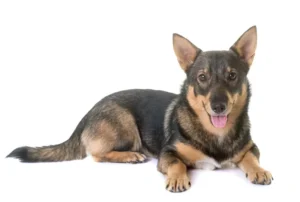
Image Credit- Getty Images
In a Nutshell
Being the owner of a herding dog is incredibly fulfilling. These committed friends are always willing to put in a hard day’s work and prove their love for you by dedicating their lives to your family.
Have you ever owned one of these herding dogs? What’s it like to live with these capable canines? Please tell us everything in the comments section below!
